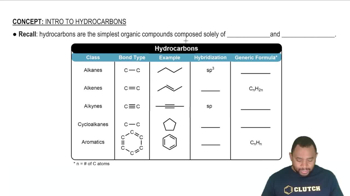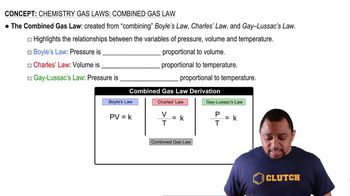Here are the essential concepts you must grasp in order to answer the question correctly.
Hydrocarbon Cracking
Hydrocarbon cracking is a chemical process that breaks down large hydrocarbon molecules into smaller, more useful ones, typically through heat or catalysts. This process is essential in petroleum refining, as it increases the yield of lighter hydrocarbons like ethane and ethylene, which are valuable for fuel and chemical production. Understanding the mechanisms and products of cracking is crucial for predicting the outcomes of reactions involving hydrocarbons.
Recommended video:
Equilibrium in Chemical Reactions
Chemical equilibrium occurs when the rates of the forward and reverse reactions are equal, resulting in constant concentrations of reactants and products over time. In the context of the butane cracking reaction, reaching equilibrium means that the amounts of butane, ethane, and ethylene will stabilize, allowing for the calculation of conversion percentages and total pressure. The concept of equilibrium is fundamental in predicting the behavior of reactions under specific conditions.
Recommended video:
Chemical Equilibrium Concepts
Gas Laws and Pressure Calculations
Gas laws describe the relationships between pressure, volume, temperature, and the number of moles of a gas. In this scenario, the ideal gas law (PV=nRT) can be applied to determine the total pressure at equilibrium after the reaction. Understanding how to manipulate these variables is essential for calculating the changes in pressure and volume that occur during the cracking process, especially in a closed system.
Recommended video:
 Verified step by step guidance
Verified step by step guidance


